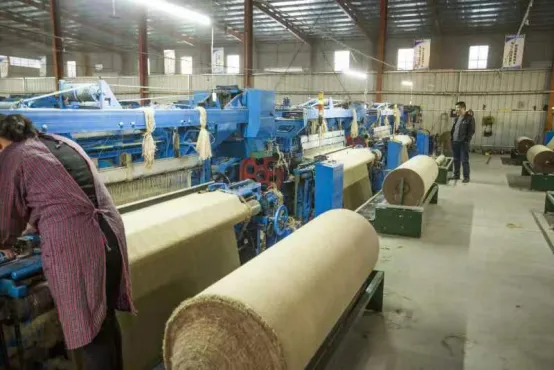jute fabric
The Versatility and Sustainability of Jute Fabric
Jute fabric has gained significant popularity in recent years due to its eco-friendly characteristics, versatility, and aesthetic appeal. Made from the fibers of the jute plant, which is primarily grown in warm, humid climates like those in Bangladesh, India, and Myanmar, jute is often referred to as the golden fiber due to its shimmering golden hue and impressive durability. This article delves into the various aspects of jute fabric, including its history, production process, applications, and environmental benefits.
Historical Context
The use of jute dates back thousands of years, with archaeological evidence suggesting that it was cultivated in the Indian subcontinent as early as the 3rd century BC. Traditionally, jute has been used for various purposes, including making sacks, ropes, and carpets. It was during the British colonial era that jute gained global prominence, particularly in the 19th century when jute mills were established in India. The fabric became increasingly important during the Industrial Revolution, being used extensively for packaging and shipping goods.
Production Process
The production of jute fabric begins with harvesting the jute plant, which typically reaches maturity within four to six months. Once harvested, the stems undergo a process known as retting, where they are immersed in water to separate the fibers from the stalks. After retting, the fibers are dried, spun into threads, and woven or knitted into fabric. This sustainable method of production not only minimizes environmental impact but also supports the livelihoods of millions of farmers and workers involved in the jute industry.
Applications of Jute Fabric
One of the key reasons for the growing interest in jute fabric is its versatility. It can be used in a wide array of products, catering to both functional and aesthetic needs. Some of the most common applications of jute fabric include
jute fabric

1. Home Décor Jute is increasingly being used in home décor items such as curtains, cushion covers, and wall hangings. Its natural texture and earthy tones add warmth and elegance to any space.
2. Eco-Friendly Packaging With the rising concern over plastic waste, many companies are turning to jute bags as an environmentally friendly alternative for packaging. Durable and reusable, jute bags are perfect for shopping, gifting, and promoting sustainable consumerism.
3. Fashion Designers have embraced jute fabric in the fashion industry, creating clothing, shoes, and accessories that are both stylish and sustainable. The unique texture of jute adds character to garments, making them stand out.
4. Bags and Accessories Jute is often used to create tote bags, backpacks, and other accessories that combine functionality with a rustic aesthetic. These items can be both chic and practical, appealing to environmentally conscious consumers.
5. Carpets and Rugs Jute's durability makes it a popular choice for carpets and rugs. The natural fibers create a beautiful and robust flooring option that complements various interior styles.
Environmental Benefits
One of the most compelling reasons to choose jute fabric over synthetic alternatives is its eco-friendliness. Jute is biodegradable and compostable, unlike polyester and nylon, which contribute to plastic pollution. Furthermore, jute cultivation requires minimal pesticides and fertilizers, making it an environmentally sustainable crop. The jute plant also absorbs substantial quantities of carbon dioxide during its growth, helping to mitigate climate change.
In conclusion, jute fabric is a remarkable material that perfectly aligns with the values of sustainability and versatility. From its rich historical roots to its contemporary applications in fashion, home décor, and eco-friendly packaging, jute continues to make a significant impact. As we become more aware of our environmental footprint, jute fabric presents a promising alternative that not only enhances our lives but also nurtures the planet. Whether you’re looking to incorporate jute into your home or wardrobe, choosing this natural fiber is a step toward a more sustainable future.
Share
-
The Best Lubricants for Aluminum Roller GuidesNewsJul.23,2025
-
Slitting Machine Applications in the Packaging IndustryNewsJul.23,2025
-
Rolling Roller Balancing Techniques for Smooth OperationNewsJul.23,2025
-
How To Optimize An EV Battery Assembly LineNewsJul.23,2025
-
Energy Efficiency in Modern Battery Formation EquipmentNewsJul.23,2025
-
Automation Trends in Pouch Cell Assembly EquipmentNewsJul.23,2025







